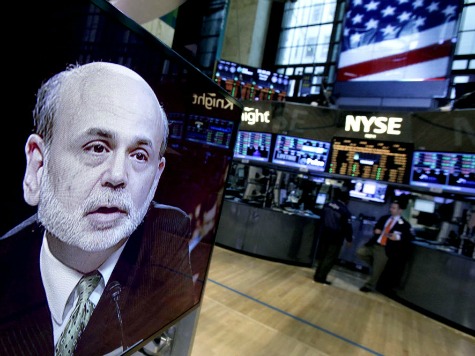
Earlier this week I spoke with my friend Constance Hunter, Chief Economist for Alternative Investments at KPMG in New York. Hunter is upbeat on the US economy with an estimate of 2.75% growth in 2013. The modest growth number is both good and bad news, but perhaps the more interesting point is that she expects to see a slow improvement in US jobs and consumer activity without a continued rapid recovery in housing prices.
Like many economists, Hunter has a double digit estimate for home price appreciation nationally in 2013, but her 2014 estimate is roughly half that rate; if anything, she is inclined to decrease next year’s projection for housing prices. Like many other analysts, Hunter sees housing slowing in the next year as a dearth of first time home buyers, slow employment growth, and flat consumer income all act as headwinds to further home price appreciation. Despite the cautious view on housing, overall Hunter is optimistic about the US economy, in part because she expects growth in Europe to slowly improve and thereby help boost demand for American goods and services.
The financial markets are not yet buying that upbeat analysis, however. On Thursday, U.S. stocks fell the most since June as forecasts from Cisco (CSCO) Systems Inc. and Wal-Mart (WMT) disappointed, while improving economic data pushed bond yields higher amid concern the Federal Reserve will reduce stimulus. As we’ve discussed in previous columns, the stimulus from the Fed is mostly helping banks and other leveraged investors, with little benefit for consumers or even the housing sector as a whole.
Sam Khater, Deputy Chief Economist at housing data firm CoreLogic, notes that the WMT same store sales were down 0.3% and foot traffic fell 0.5%, the second decline in a row. “Contrast these numbers with the rosy retail sales from the Census Bureau earlier this week which are wealth effect driven,” notes Khater. He elaborates:
Despite the obviously different sources and coverage, the divergence between retailers like WMT and the Census data is indicative of the fact that the middle is hollowing out due to stagnation in incomes. Overall consumption increases look decent but there are distributional differences that become clear in sales for middle income consumers. The wealth effect via higher housing prices and very low rate environment is assisting upper middle income mortgage borrowers much more than lower and middle income renters. Since renters have much less financial assets they are also not gaining from higher stock prices (which partly reflects lower rates). The artificially low monetary policy environment four years into the expansion cannot fix real problems in the economy and is only distorting the problem more.
The assessment by Khater comes into even sharper focus when you appreciate the fact that the Fed’s low interest rates and tens of billions of dollars in purchases of government debt and mortgage bonds have only helped consumers with the best credit. Low interest rates and ample government subsidies have helped millions of Americans to refinance their homes, but the bottom half of the housing market has not been invited to the party. Since roughly half of all homes with mortgages still don’t have enough equity to actually trade in the home market, supplies of homes are constrained. This does not help consumer spending or job creation.
To Khater’s point about the so-called “wealth effect,” yet another hallucination brought to us by the Keynesian-socialist crowd, the increase in home prices over the past several years has not been sufficient to really revive the animal spirits when it comes to consumer income. The mere suggestion of a higher home valuation, some economists believe, is enough to get Americans to borrow and spend. But neither low interest rates nor almost $1 trillion in Fed purchase of securities has encouraged credit to again start growing in a significant way.
With the notable exception of auto and credit cards, loan portfolios on the balance sheet of US banks are flat. Economists Hui Shan, Marty Young, and Charlie Himmelberg at Goldman Sachs report that more than half of all homes sold last year and so far in 2013 have been financed without a mortgage, Yahoo Finance reports.
While the US economy is probably going to grow faster than many people expect, limits on consumption will tend to keep growth modest, which is probably a good thing. Constance Hunter at KPMG notes that with almost half of all income coming from transfer payments, growth in consumer spending is likely to be modest — even if the rest of the economy does gradually pick up pace.
But the key takeaway is that the Fed has failed to induce stronger credit growth in the US economy via zero interest rates and “quantitative easing,” a polite euphemism for printing money a la Weimar Germany in the 1920s. In order to get the private sector portion growing faster, we need to see growth in private credit, which leads to more private investment and new private jobs. Sadly, no one on the Federal Open Market Committee–yet–seems to know how to make that happen.

COMMENTS
Please let us know if you're having issues with commenting.